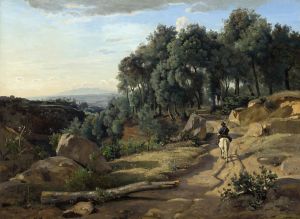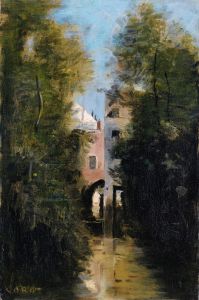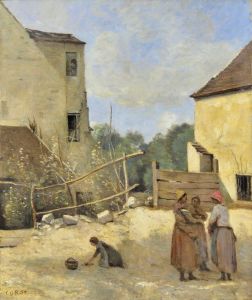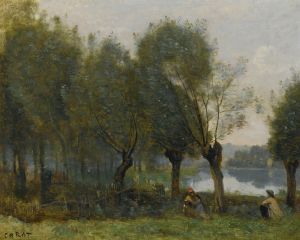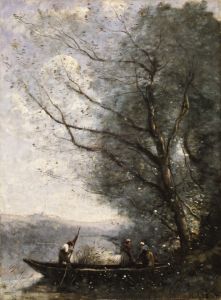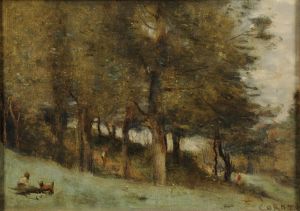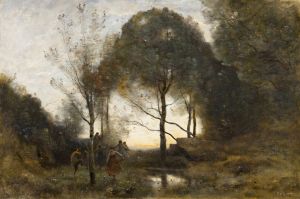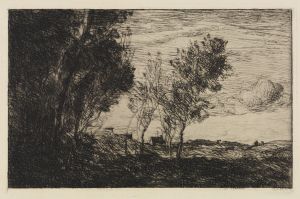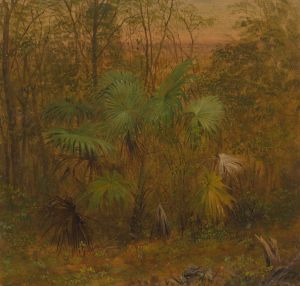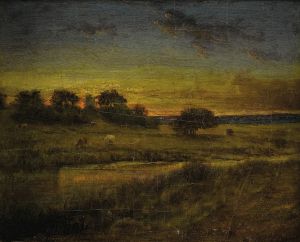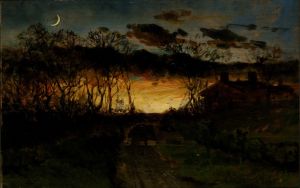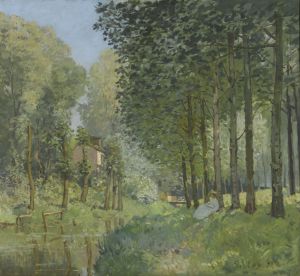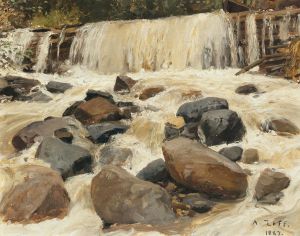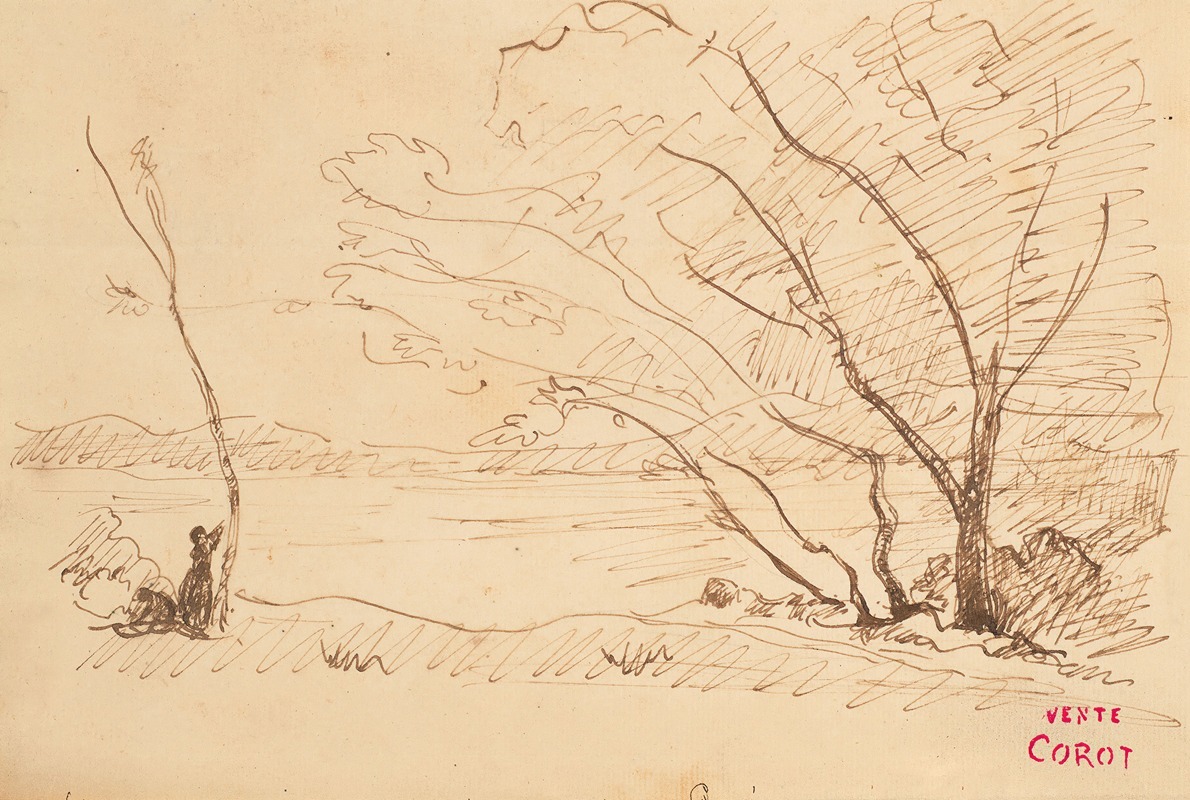
Souvenir de Mortefontaine
A hand-painted replica of Jean-Baptiste-Camille Corot’s masterpiece Souvenir de Mortefontaine, meticulously crafted by professional artists to capture the true essence of the original. Each piece is created with museum-quality canvas and rare mineral pigments, carefully painted by experienced artists with delicate brushstrokes and rich, layered colors to perfectly recreate the texture of the original artwork. Unlike machine-printed reproductions, this hand-painted version brings the painting to life, infused with the artist’s emotions and skill in every stroke. Whether for personal collection or home decoration, it instantly elevates the artistic atmosphere of any space.
Jean-Baptiste-Camille Corot's "Souvenir de Mortefontaine" is a celebrated painting that exemplifies the artist's mastery in capturing the serene beauty of nature. Painted in 1864, this work is a quintessential example of Corot's mature style, which seamlessly blends elements of realism and romanticism. The painting is housed in the Louvre Museum in Paris, France, where it continues to be admired by art enthusiasts from around the world.
"Souvenir de Mortefontaine" depicts a tranquil scene by a pond, surrounded by lush trees and foliage. The composition is marked by its harmonious balance and the soft, diffused light that bathes the entire scene. In the foreground, three figures, a woman and two children, are seen leisurely enjoying the peaceful setting. The figures are engaged in a quiet activity, possibly gathering flowers or simply enjoying the natural surroundings. This human presence adds a narrative element to the landscape, inviting viewers to reflect on the relationship between people and nature.
Corot's technique in this painting is noteworthy for its delicate brushwork and subtle use of color. The palette is dominated by gentle greens, blues, and earth tones, which contribute to the overall sense of calm and tranquility. The artist's skillful handling of light and shadow creates a sense of depth and atmosphere, drawing the viewer into the idyllic scene. The reflections in the water are rendered with particular finesse, showcasing Corot's ability to capture the ephemeral qualities of nature.
The title "Souvenir de Mortefontaine" suggests that the painting is a recollection or memory of Mortefontaine, a village in the Oise department in northern France. This area was known for its picturesque landscapes, which often inspired artists of the time. Corot's choice to depict this location reflects his deep appreciation for the natural world and his desire to convey its beauty through his art.
Corot was a pivotal figure in the transition from traditional neoclassical landscape painting to the more expressive and atmospheric approach of the Barbizon School, of which he was a leading member. His work laid the groundwork for the Impressionist movement, influencing artists such as Claude Monet and Camille Pissarro. "Souvenir de Mortefontaine" exemplifies Corot's innovative approach to landscape painting, characterized by a focus on mood and emotion rather than strict topographical accuracy.
Throughout his career, Corot was celebrated for his ability to capture the essence of a scene with simplicity and grace. His landscapes often evoke a sense of nostalgia and contemplation, qualities that are evident in "Souvenir de Mortefontaine." The painting invites viewers to pause and appreciate the quiet beauty of the natural world, a theme that resonates with audiences even today.
In summary, "Souvenir de Mortefontaine" is a masterful representation of Jean-Baptiste-Camille Corot's artistic vision. Through its harmonious composition, delicate color palette, and evocative atmosphere, the painting captures the timeless beauty of nature and the peaceful coexistence of humanity within it. As a significant work in Corot's oeuvre, it continues to be celebrated for its contribution to the development of landscape painting in the 19th century.






